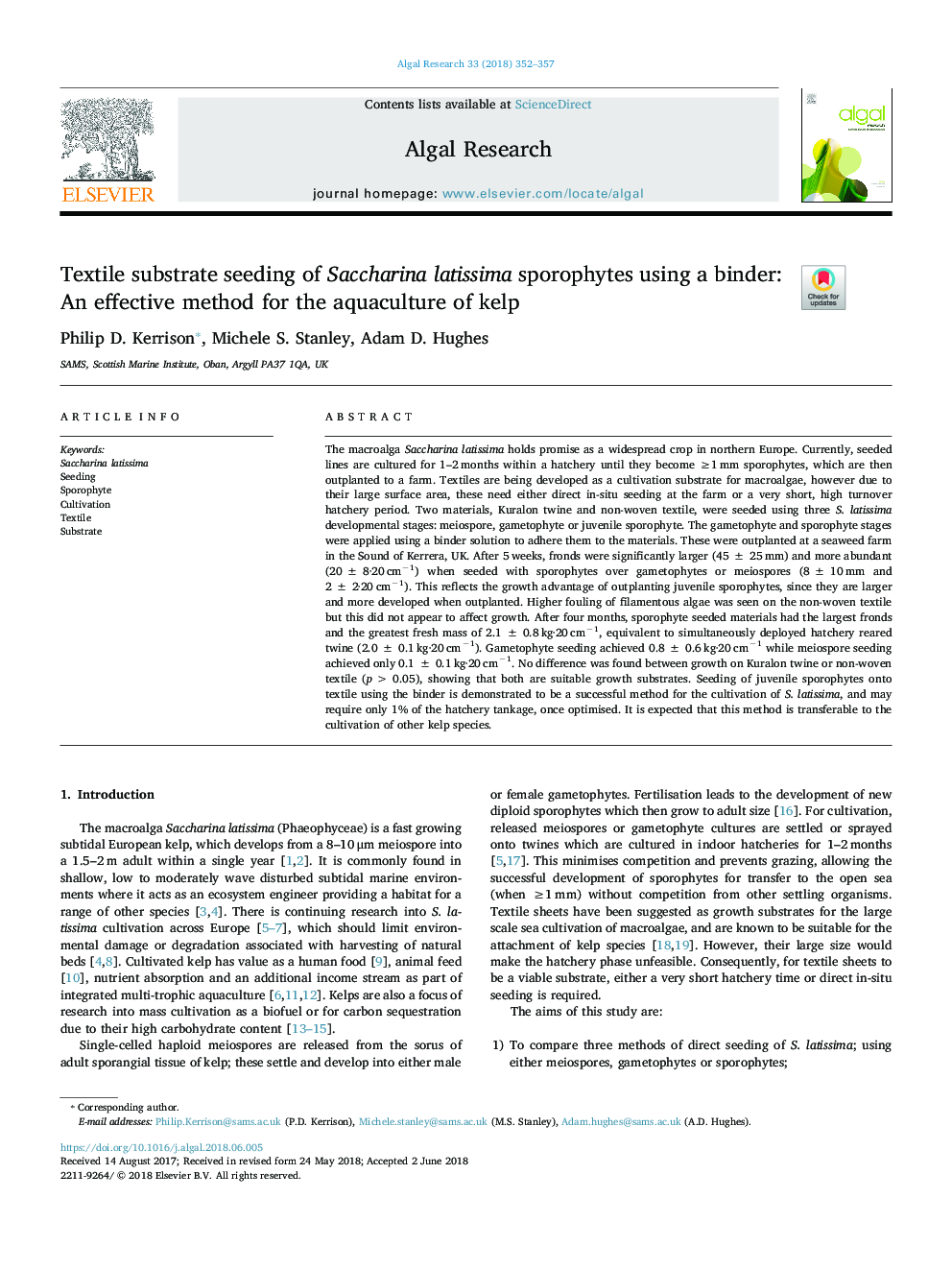| کد مقاله | کد نشریه | سال انتشار | مقاله انگلیسی | نسخه تمام متن |
|---|---|---|---|---|
| 8085729 | 1521800 | 2018 | 6 صفحه PDF | دانلود رایگان |
عنوان انگلیسی مقاله ISI
Textile substrate seeding of Saccharina latissima sporophytes using a binder: An effective method for the aquaculture of kelp
دانلود مقاله + سفارش ترجمه
دانلود مقاله ISI انگلیسی
رایگان برای ایرانیان
کلمات کلیدی
موضوعات مرتبط
مهندسی و علوم پایه
مهندسی انرژی
انرژی های تجدید پذیر، توسعه پایدار و محیط زیست
پیش نمایش صفحه اول مقاله

چکیده انگلیسی
The macroalga Saccharina latissima holds promise as a widespread crop in northern Europe. Currently, seeded lines are cultured for 1-2â¯months within a hatchery until they become â¥1â¯mm sporophytes, which are then outplanted to a farm. Textiles are being developed as a cultivation substrate for macroalgae, however due to their large surface area, these need either direct in-situ seeding at the farm or a very short, high turnover hatchery period. Two materials, Kuralon twine and non-woven textile, were seeded using three S. latissima developmental stages: meiospore, gametophyte or juvenile sporophyte. The gametophyte and sporophyte stages were applied using a binder solution to adhere them to the materials. These were outplanted at a seaweed farm in the Sound of Kerrera, UK. After 5â¯weeks, fronds were significantly larger (45â¯Â±â¯25â¯mm) and more abundant (20â¯Â±â¯8·20â¯cmâ1) when seeded with sporophytes over gametophytes or meiospores (8â¯Â±â¯10â¯mm and 2â¯Â±â¯2·20â¯cmâ1). This reflects the growth advantage of outplanting juvenile sporophytes, since they are larger and more developed when outplanted. Higher fouling of filamentous algae was seen on the non-woven textile but this did not appear to affect growth. After four months, sporophyte seeded materials had the largest fronds and the greatest fresh mass of 2.1â¯Â±â¯0.8â¯kg·20â¯cmâ1, equivalent to simultaneously deployed hatchery reared twine (2.0â¯Â±â¯0.1â¯kg·20â¯cmâ1). Gametophyte seeding achieved 0.8â¯Â±â¯0.6â¯kg·20â¯cmâ1 while meiospore seeding achieved only 0.1â¯Â±â¯0.1â¯kg·20â¯cmâ1. No difference was found between growth on Kuralon twine or non-woven textile (pâ¯>â¯0.05), showing that both are suitable growth substrates. Seeding of juvenile sporophytes onto textile using the binder is demonstrated to be a successful method for the cultivation of S. latissima, and may require only 1% of the hatchery tankage, once optimised. It is expected that this method is transferable to the cultivation of other kelp species.
ناشر
Database: Elsevier - ScienceDirect (ساینس دایرکت)
Journal: Algal Research - Volume 33, July 2018, Pages 352-357
Journal: Algal Research - Volume 33, July 2018, Pages 352-357
نویسندگان
Philip D. Kerrison, Michele S. Stanley, Adam D. Hughes,